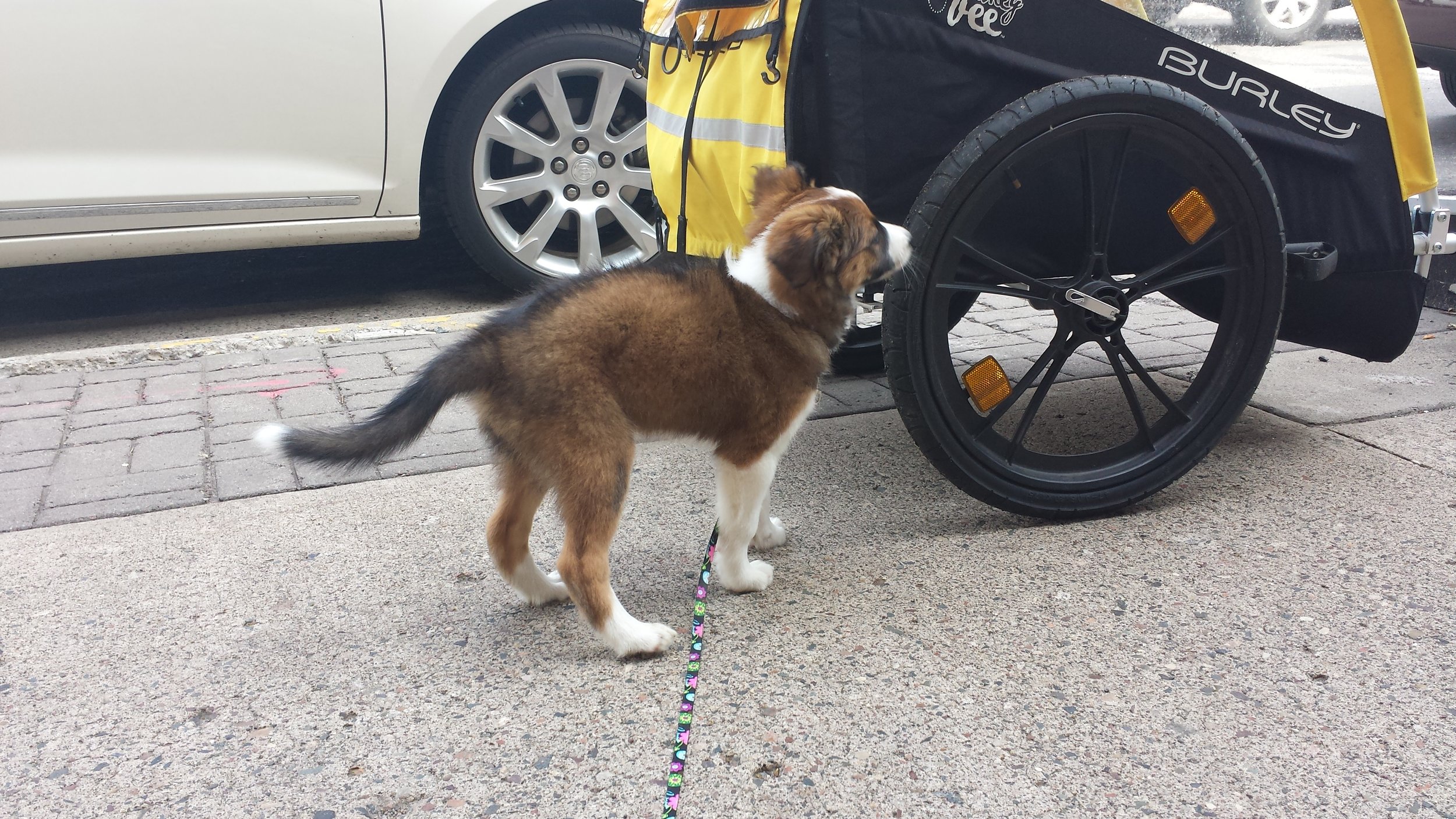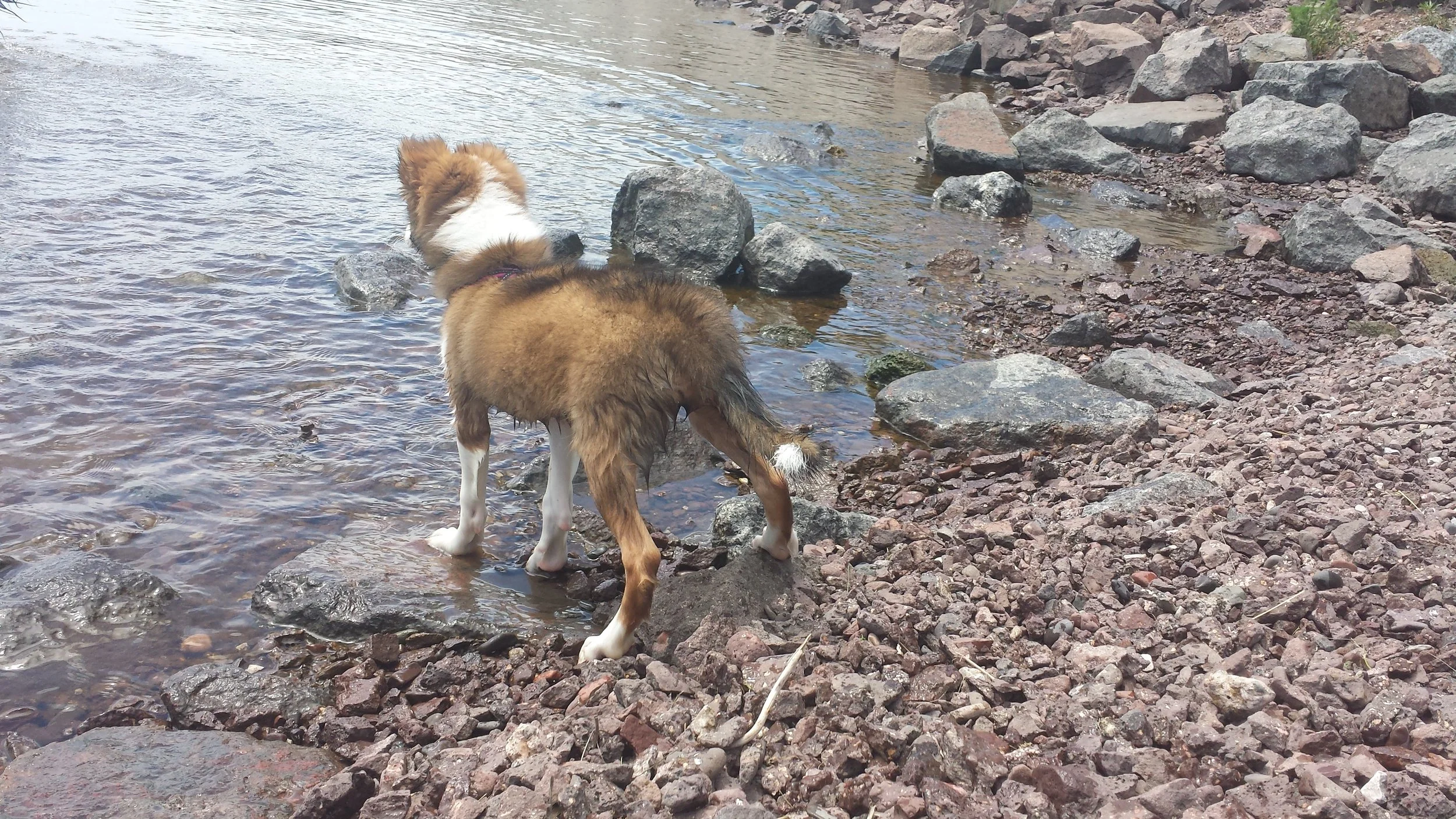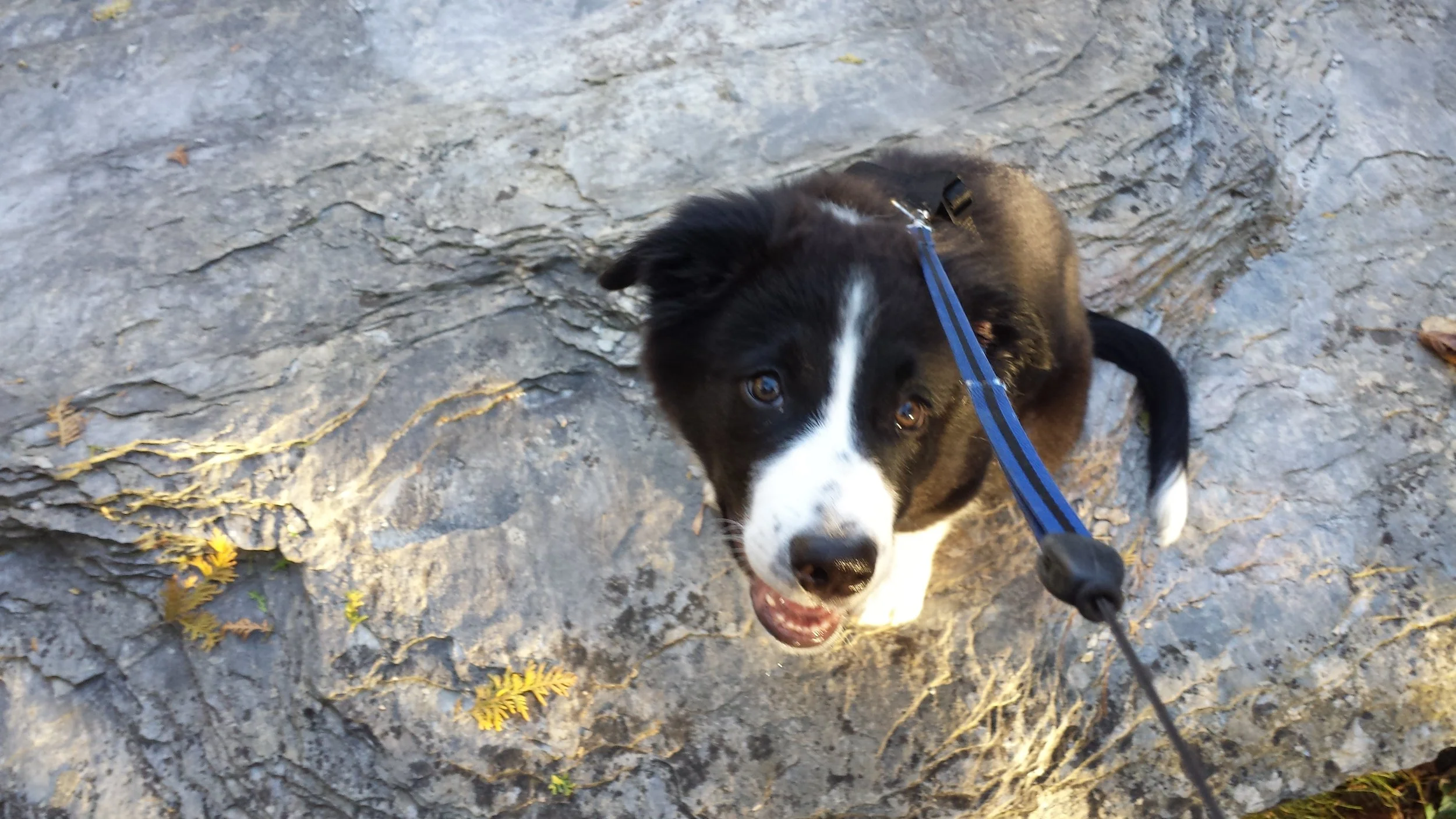Guest Post: What Does “Socialization” Really Mean?
/I teamed up with my friend (and fellow Border Collie owner!) Danielle Lindblom from The Adventure Dog Blog to bring you this amazing, information-packed blog post about socialization! I know this is a topic that interest a lot of you and I'm so happy Danielle can teach you about it! If you want to learn from her directly, make sure to check out her epic Adventure Puppy Club!
This blog post was written in its entirety by Danielle Lindblom and all of the photographs used belong to her!
Bringing home a puppy? You’ll probably be inundated with messages about socialization and how critical it is for your new puppy. The internet will tell you, your vet will tell you, your dog trainer will tell you: you need to socialize your puppy…OR ELSE! It can be incredibly confusing, overwhelming, and there can be a lot of pressure on the new puppy parent. After all, you don’t want to ruin your new blank slate puppy, do you?
With all this pressure to socialize puppies, and a short window in which to do it, people can sometimes rush out into the world, with good in their hearts, and inadvertently create long-lasting behavior problems. Of course, the opposite is also true. Lack of socialization is almost certain to create life-long behavior issues that take years to resolve. It seems pretty dire; socialize, but do it RIGHT. I’m going to break this down for you and show you that it can be fun and easy to properly socialize your puppy. Take a deep breath!
Here’s what it comes down to: puppies need to have new or novel experiences during their critical period of development (8 – 12 weeks) and continued socialization until 16 weeks. Ideally, it doesn’t stop there, either.
Now, that does not read “puppies need to play with a ton of other dogs and meet 9000 new people,” which is often how “socialization” is interpreted. That’s where things can go horribly wrong. Nope, it simply means “new experiences.” Let’s get into more detail.
During their critical period (8 – 12 weeks), puppies’ brains are forming new connections as they navigate the world. They are learning survival instincts and what is a threat versus what is good. By having many different novel experiences, their brain will make many new connections. We need to ensure those experiences are positive so that the long-term associations with people, dogs, places, and things are also positive and we do not have a fearful dog later in life.
So, what SHOULD you do with your puppy during those first few weeks?
- Go places! Go to a new place every day if you can. That could be the front yard, the back yard, the neighbor’s house, the street corner, the post office, a pet store, the vet’s office, upstairs, downstairs, the basement, downtown, to a park (NOT a dog park), anywhere you can think of that your puppy has not been to before. Ideally, make sure to include all of the places your puppy will need to visit for the duration of his life. I travel a lot, so I made sure to include a tent for camping, a hotel lobby, lots of car rides, and different family members’ houses in my puppy’s first few weeks with me.
- Touch stuff! Have your puppy experience different surfaces. Walk on concrete, stairs, carpet, linoleum, wood, boardwalks, sidewalks, the roadway, rocks, gravel, sand, and anything else you can think of. Again, form strong positive associations with exploration. You want a confident puppy who isn’t afraid to go somewhere new and walk on a new surface.
- Meet dogs! Here’s where things can go horribly wrong. If you throw your puppy into a mob of other puppies, are you creating a positive learning experience for her? Probably not. If you carefully select a wonderful adult dog with great body language and manners, I can confidently say that dog will teach your puppy good things. Yes, your puppy should meet dogs of different sizes, coat types, and appearances to be well-rounded, but you do not need to “go say hi” to every dog you see or make it your goal to expose your puppy to 100 different dogs. A few different good dogs will make a long-lasting excellent impression on your puppy’s behavior. Always think about the lessons you want your puppy to learn and select a dog that will provide that. Have a rowdy puppy that needs to be taken down a notch or two? Pair him with an older, adult female. She won’t tolerate his nonsense and will correct him in a natural, effective way. Have a shy puppy that you’d like to have better confidence? Pair her with a mellow gentleman dog who will coax her to play and come out of her shell.
- Meet people! All different types of people wearing all different types of clothing. Also, people connected to bicycles, skateboards, or wheelchairs. Again, make sure encounters are positive and, most importantly, give your puppy a choice on whether she wants to greet the person or not. Forcing your puppy to have interactions when she is unsure is a recipe for disaster. Go at your puppy’s pace.
Hopefully this “puppy primer” has helped youmake some plans on how to socialize your puppy. Have fun with it! Make every experience a fun one, and you’ll not only see a well-adjusted puppy, but you’ll also be forming an incredible bond with your new dog.
Adventure On!
Danielle Lindblom
Danielle is a blogger and dog trainer residing in Minnesota, USA. She and her two Border Collies – Mica and River – explore the great outdoors, travel, and seek adventure. You can find out more by visiting her website, Facebook page, or follow her on Instagram.
If you liked this post, please share it on your social channels and pin it to Pinterest!







